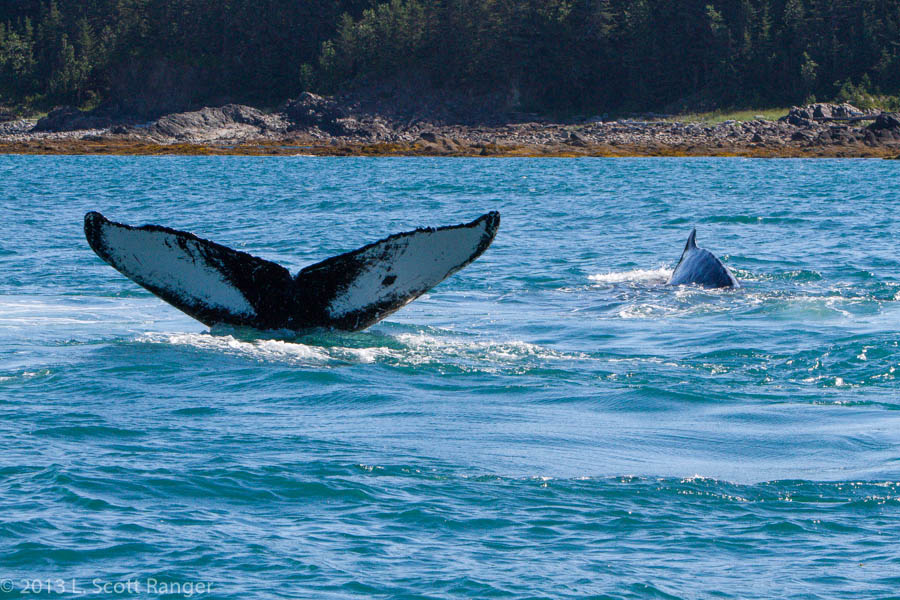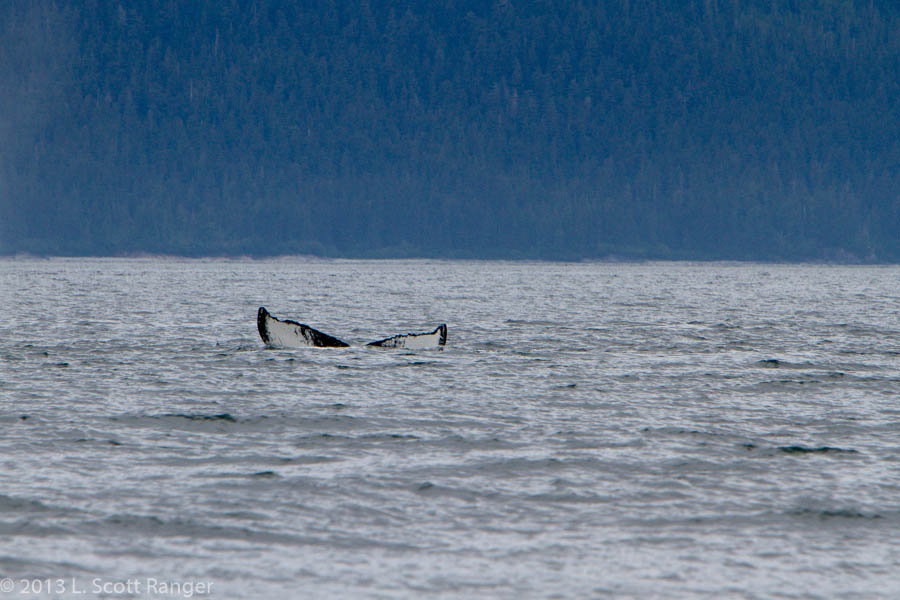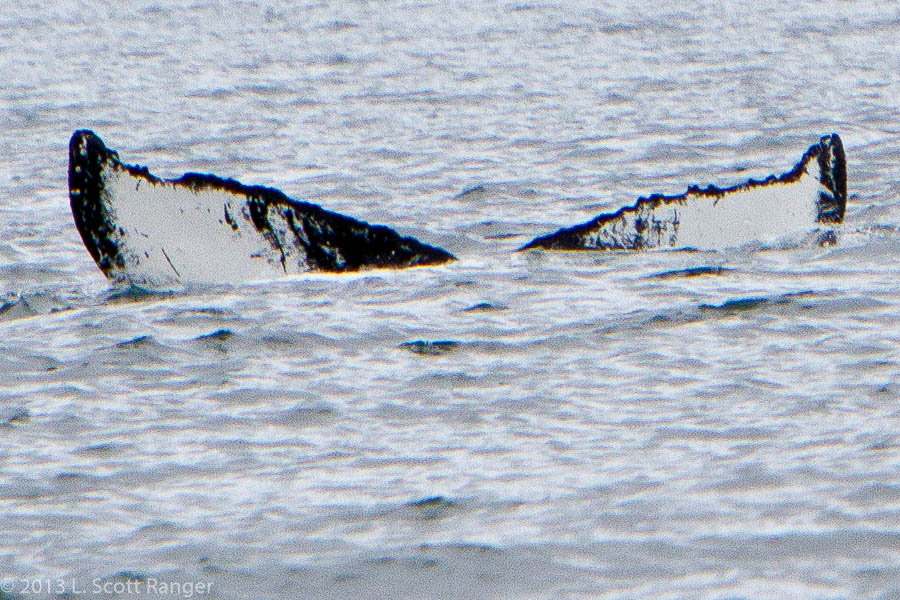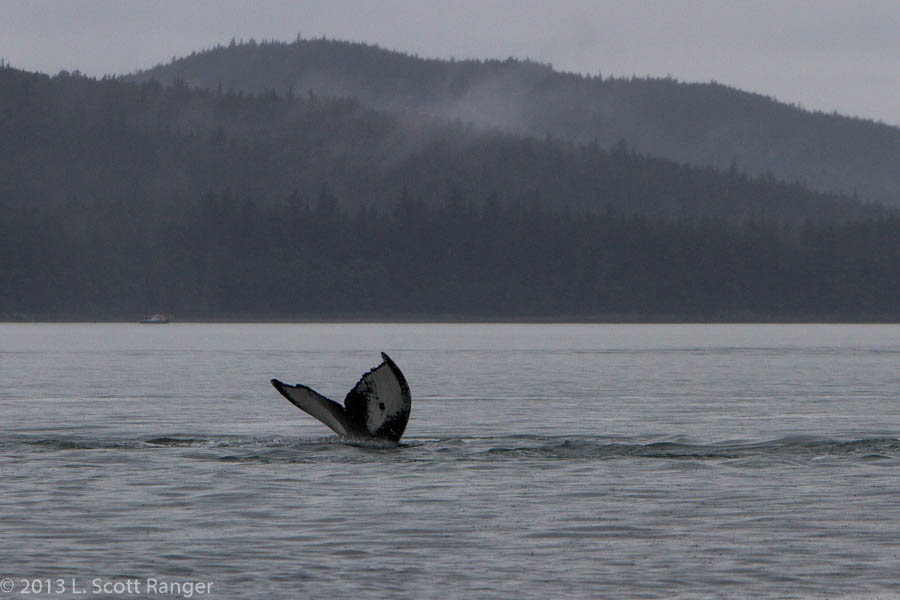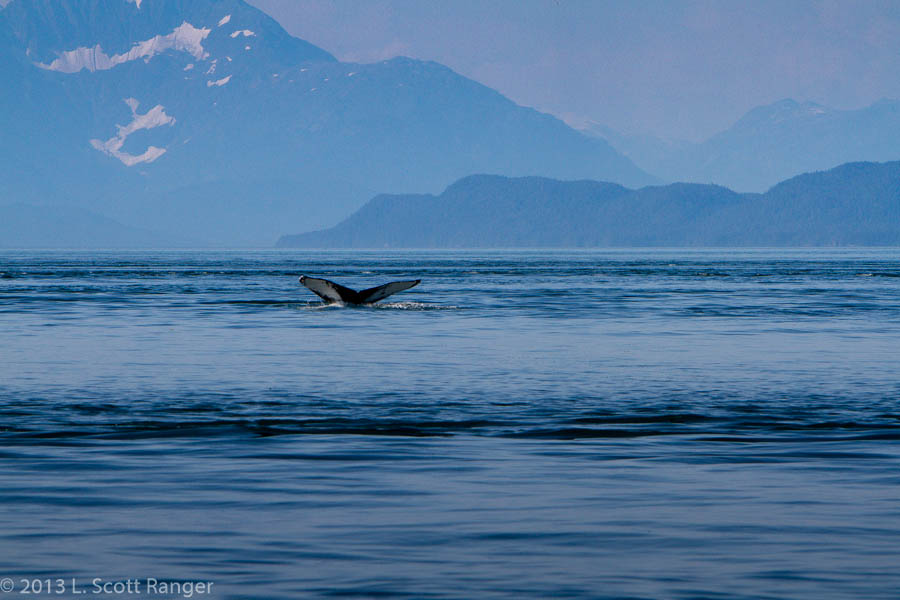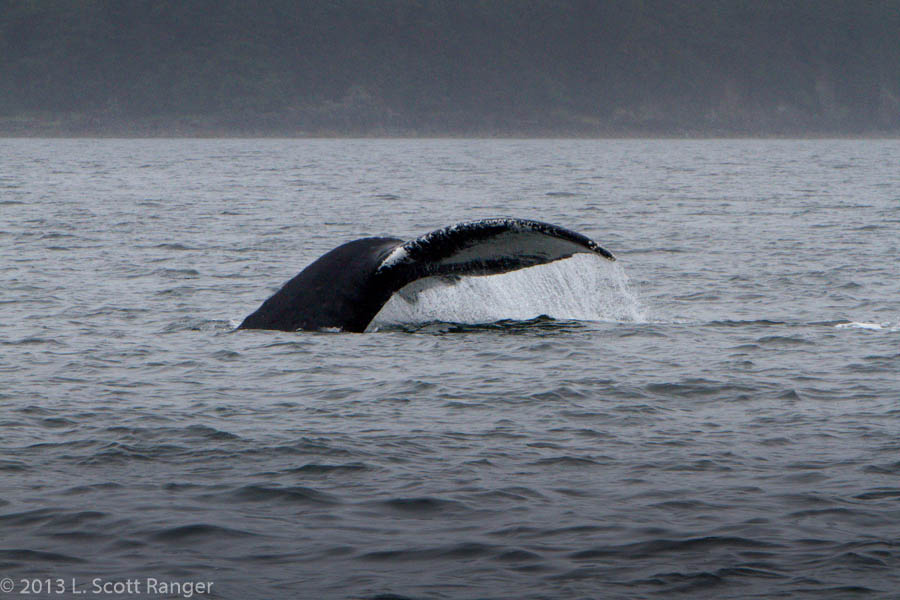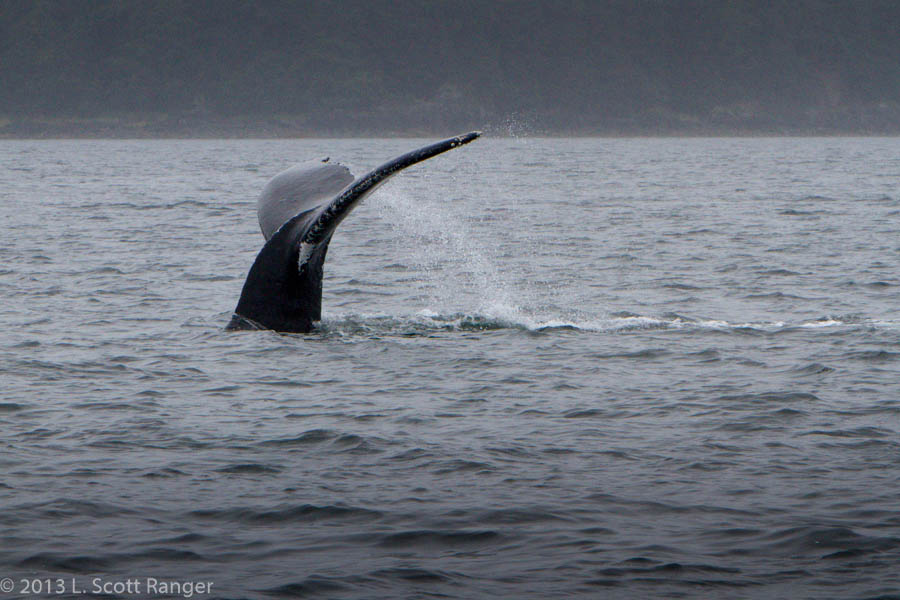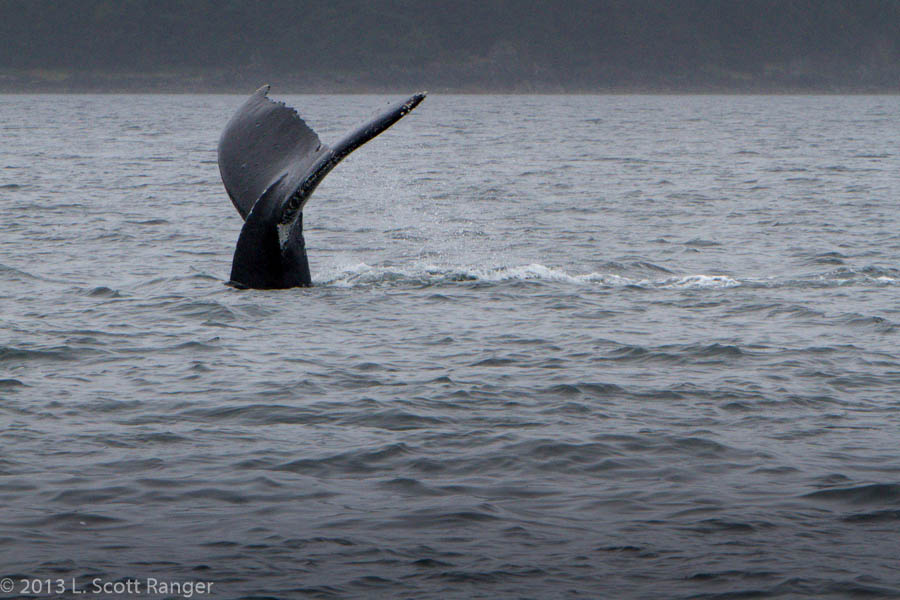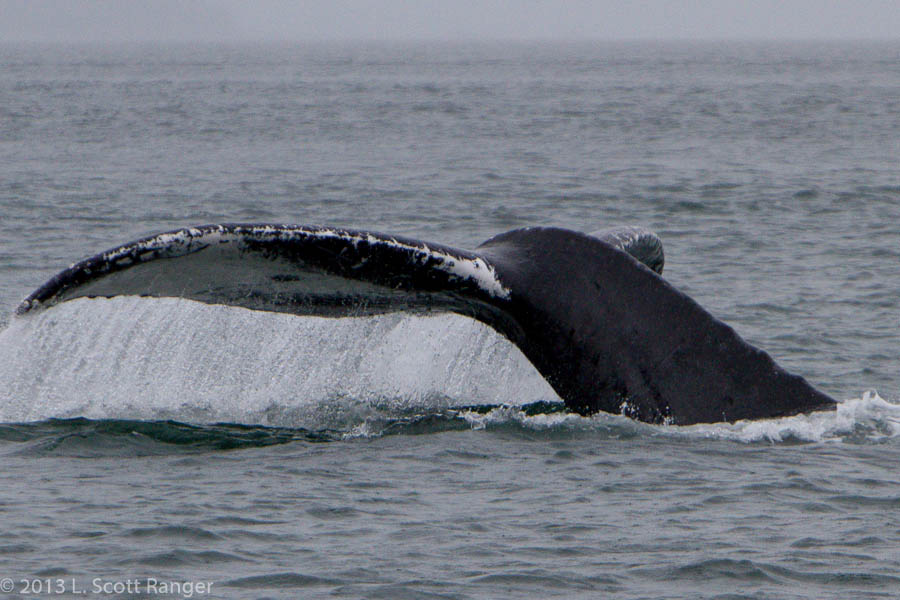1434, Spot
It doesn't take much imagination to see how Spot got his name. He does have another one, but I've never heard anyone call him Curious George since Spot is so totally "him".
First cataloged here in 2006, Spot can be counted on for a good show in mid- to late summer, and has been seen here as late as December. Boat Captain Jeff Worthen sees Spot regularly in the winter in Maui and has watched him pursue females during the mating games that take place there. I've photographed spot since 2010, somehow missing him in 2009. Here he dives with an unidentified juvenile in the waters of North Pass on July 31, 2013 on one of the glorious days from that incredible summer.
First cataloged here in 2006, Spot can be counted on for a good show in mid- to late summer, and has been seen here as late as December. Boat Captain Jeff Worthen sees Spot regularly in the winter in Maui and has watched him pursue females during the mating games that take place there. I've photographed spot since 2010, somehow missing him in 2009. Here he dives with an unidentified juvenile in the waters of North Pass on July 31, 2013 on one of the glorious days from that incredible summer.
This photo (the one on the right is an extreme crop) illustrates the peril of relying upon a single character for identifying a whale. I took this photo on August 5, 2010 and it languished in Lightroom with an "unidentified" tag until August of 2013 when I took the time to go back and review all of my unidentified fluke shots. Compare the black marks that intrude on the pure white of Spot's tail and it is immediately obvious that it is Spot. There are plenty of unique characters besides his spot to make positive identification. It is hard to remember all of these things, but worth trying if we really want to get to know someone.
It is probably with some prejudice toward white tails that causes most of us find them as favorites. They're much easier to spot characters that make identification easier, and I sometimes hear that they do high tail dives better. I don't think that's really true, our eyes simply follow the brilliant contrast between the black and white patterns. Spot is a great high tail diver and more often than not gives us a great view of his "spot".
In this diving sequence I took on September 5, 2012, the angle is not right for good identification. Yet with a careful look in Lightroom, the first photo gives me more than enough characters to compare with a known photo to make a positive identification. The other three don't show the ventral side of the tail at all. But with them I now notice another character that I can use to spot Spot.
The left photo is an extreme crop of the first diving sequence above and the right photo is of Spot's opposite fluke taken on August 24, 2013. A new, and very obvious character shows up on both leading edges for me to remember for identification from this view. Spot has very prominent white patches on the leading edge of his fluke right where they join the peduncle, and a mottling of white almost all the way out to the trailing tips of his flukes.
